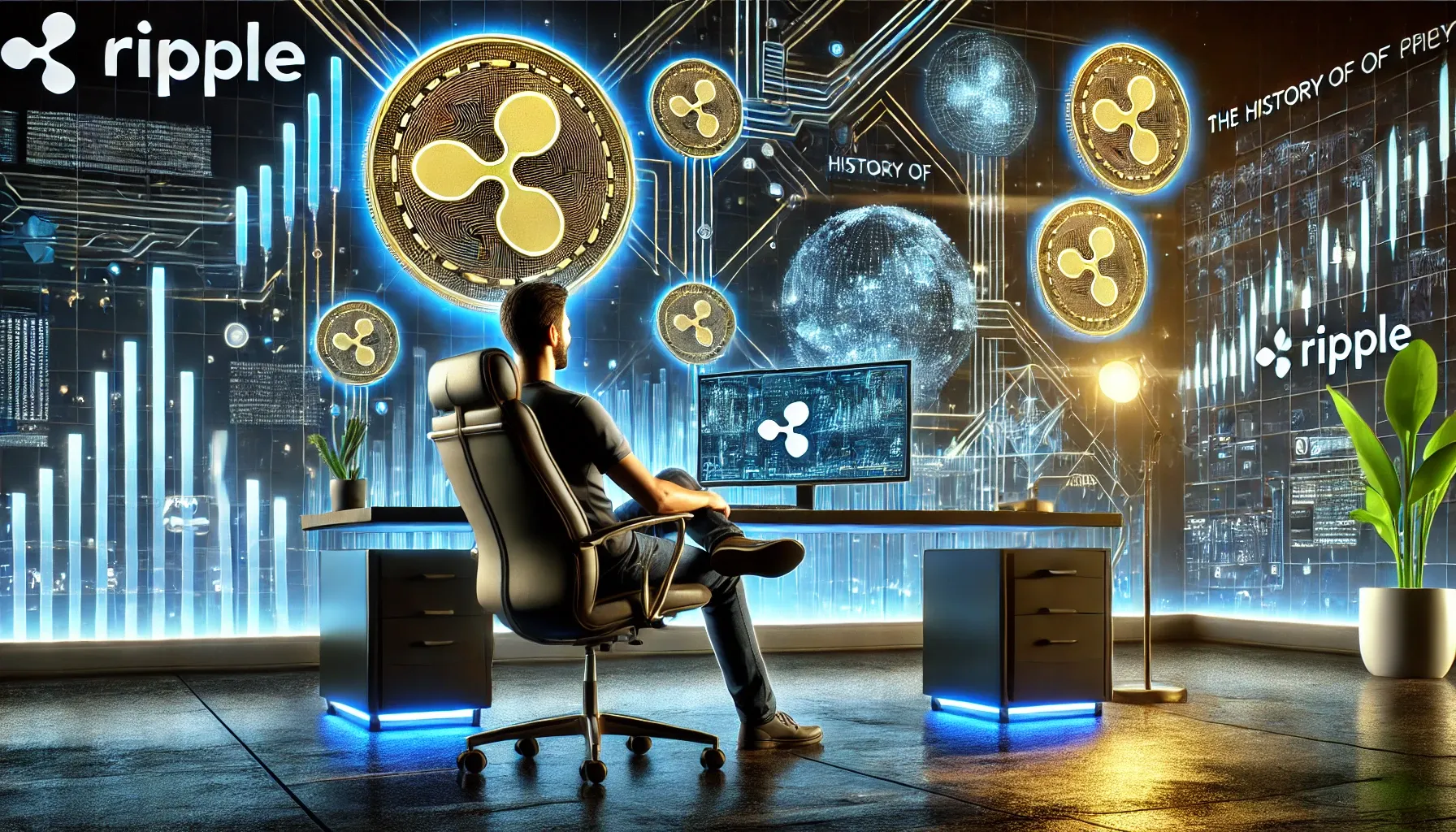Ripple has captured the attention of many in the cryptocurrency world. But what is Ripple really, and why is it so important? In this article, we will explore Ripple in depth, its history, and its cryptocurrency, XRP. From its functionality to its impact on global finance, you'll find all the information you need to understand this fascinating project.
Introduction to Ripple
Imagine a system that allows you to transfer money across the globe in seconds, without the high costs of traditional bank transfers. This is exactly what Ripple aims to do: facilitate fast and affordable transactions through its innovative technology.
Ripple is not just a cryptocurrency; it is a set of financial solutions that includes a payment network and a protocol to facilitate money transfers. As we progress, we will discover how it works and why it has been adopted by renowned financial institutions.
What is Ripple?
Ripple is a payment technology and money transfer protocol that allows financial institutions to perform international transactions quickly and securely. Unlike Bitcoin and other cryptocurrencies that seek to be an alternative to traditional money, Ripple is designed to work with existing systems.
Key Features of Ripple
- Speed: Transactions are processed in seconds.
- Cost: Transaction fees are minimal, making them more affordable than traditional transfers.
- Security: It uses blockchain technology to ensure the security of transactions.
History of Ripple
The Early Years
Ripple was created in 2012 by Chris Larsen and Jed McCaleb. The original idea was to provide a decentralized payment system that facilitated money transfers between different currencies. In 2013, the cryptocurrency XRP was launched, which would become the heart of the Ripple ecosystem.
Evolution and Adoption
Over the years, Ripple has evolved and gained the attention of banks and financial institutions. In 2015, Ripple Labs, the company behind Ripple, began collaborating with financial institutions to implement its payment technology. Since then, more than 300 institutions have adopted Ripple for their payment operations.
The Success of XRP
XRP is the native cryptocurrency of the Ripple network. It is used as a bridge between different currencies during transactions. This means that instead of directly exchanging currencies, banks can convert their currency to XRP and then to the recipient's currency, reducing costs and wait times.
How Ripple Works
The Ripple Network
Ripple uses a distributed ledger that allows participants in the network to validate transactions efficiently. Instead of relying on miners as in the case of Bitcoin, Ripple uses a consensus protocol that allows nodes to validate transactions.
Transaction Process
1. Initiating the Transaction: A bank initiates the transaction through the Ripple network.
2. Conversion to XRP: The amount in the local currency is converted to XRP.
3. Validation: Nodes on the network verify the transaction.
4. Completion: The transaction is completed, and funds are transferred to the recipient's currency.
Benefits for Financial Institutions
Financial institutions benefit from Ripple in several ways:
- Cost Reduction: Transaction fees are significantly lower than traditional banks.
- Speed: Transactions are completed in seconds, improving operational efficiency.
- Transparency: The use of blockchain technology provides a clear and secure record of all transactions.
XRP: The Cryptocurrency of Ripple
What is XRP?
XRP is the native cryptocurrency of the Ripple ecosystem and is primarily used as a means of exchange on the network. Unlike other cryptocurrencies, XRP is not mined; instead, a total of 100 billion XRP was issued at the project's inception.
Uses of XRP
- Facilitating Transactions: It is used as a bridge for transactions between different currencies.
- Cost Savings: Allows institutions to save on transfer fees.
The Future of XRP
The future of XRP looks promising, especially as more financial institutions adopt Ripple's technology. However, it also faces challenges, including regulation and competition from other cryptocurrencies.
Ripple seems to have a bullish sentiment due to the fact that it has launched its own stablecoin that has 1:1 parity with the US dollar and trades on the Ethereum network and XRP Ledger. This is important to note because if stablecoin adoption is massive by consequence Ripple will have massive adoption and will have a noticeable increase in liquidity within the ecosystem.
On the other hand, the end of the legal dispute with the departure of Gary Gensler from the Securities and Exchange Commission regulator clearly favors the growth of XRP.
Finally companies such as 21Shares filed the application for its XRP-based exchange-traded fund (ETF) to be called 21Shares Core XRP Trust.
Challenges and Criticisms
Despite its achievements, Ripple has faced criticisms and challenges. Some of the concerns include:
- Centralization: Although Ripple presents itself as a decentralized system, some critics argue that it is more centralized compared to other cryptocurrencies like Bitcoin.
- Regulation: Ripple has faced scrutiny from regulators, creating uncertainty about its future.
Conclusion
Ripple and its cryptocurrency XRP are revolutionizing how financial institutions conduct transactions. With its innovative technology, Ripple is facilitating money transfers globally quickly and affordably. As the world of cryptocurrencies continues to evolve, Ripple is positioned as a key player in the transformation of global finance.
If you're interested in the world of cryptocurrencies and the financial solutions of the future, Ripple is a topic that definitely deserves your attention. The future of money is changing, and Ripple is at the heart of this transformation!
